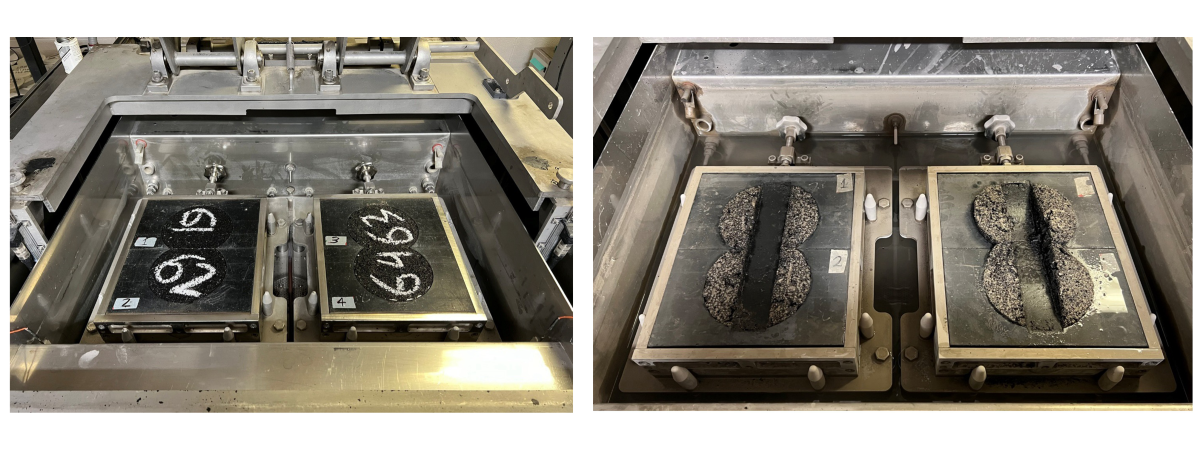Every year, millions of tons of plastic waste end up in landfills or as pollution, with only a fraction being recycled. In an effort to turn this growing problem into a solution, researchers have explored incorporating post-consumer plastic into asphalt, potentially creating more durable roads while reducing waste. However, a critical question remains: Could this approach unintentionally contribute to microplastic pollution as roads wear down over time?
To investigate this issue, Shihui Shen, a distinguished professor of rail transportation engineering, and Jubair Ahmad Musazay, an assistant research professor and doctoral student advised by Shen, partnered with the Environmental Contaminants Analytical Laboratory. Their goal was to determine whether plastic-infused asphalt releases microplastics under real-world conditions.
Testing for Microplastic Release
Shen and Musazay prepared asphalt samples, including heavily damaged and worn specimens, using equipment such as the Hamburg Wheel Tracking Test Machine, which simulates the stress of traffic and environmental conditions. They then collected water exposed to these samples and sent it to the Environmental Contaminants Analytical Laboratory for analysis.

While roads are already a significant source of microplastic pollution—due to tire degradation, flaking road paint, and runoff—this study aimed to determine whether plastic-modified asphalt posed an additional risk. The research team utilized advanced analytical tools, including the Laser Direct Infrared (LDIR) Chemical Imaging System, which not only detects microplastics but also images each particle, analyzing its shape, size, and chemical composition. The resulting data provided a clearer picture of how different plastic components behave when exposed to wear and environmental conditions.

Advancing Sustainable Infrastructure
The team’s collaboration with the Environmental Contaminants Analytical Laboratory provided access to state-of-the-art facilities and expertise, ensuring high-quality data collection. Their findings contribute to a growing body of research on the environmental impact of plastic-infused road materials, offering insights that could shape future infrastructure design.
Beyond identifying potential risks, the study demonstrated the value of advanced analytical techniques in environmental research. By improving the understanding of microplastic behavior, researchers can work toward sustainable solutions that balance durability with environmental responsibility.
“Our collaboration with the Environmental Contaminants Analytical Laboratory provided access to their state-of-the-art experimental facilities to assess potential microplastic leakage in plastic-modified asphalt mixtures. The researchers and staff at Environmental Contaminants Analytical Laboratory are exceptionally knowledgeable and supportive, ensuring a seamless and highly efficient data collection process.”
— Shihui Shen, Distinguished Professor of Rail Transportation Engineering
As research continues, studies like this will help guide the development of roads that are both stronger and more sustainable, ensuring that innovations in construction materials contribute to solutions—not new environmental challenges.






